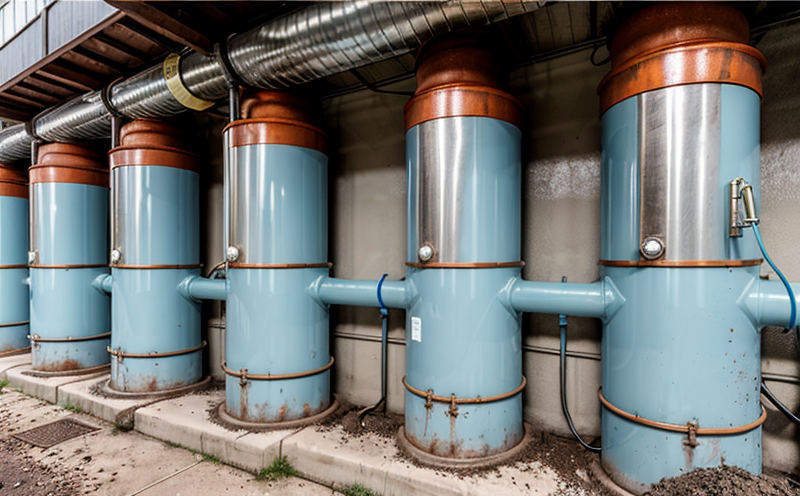ASTM G1 Deposit Removal and Analysis Test
The ASTM G1 Deposit Removal and Analysis Test is a critical procedure designed to evaluate the effectiveness of materials used in water systems against corrosion, scaling, and deposit formation. This standardized test method is widely recognized by industries that rely on the integrity and longevity of their water infrastructure.
Corrosion, scaling, and deposits can significantly impact the performance and lifespan of water systems. Materials used within these systems must be capable of withstanding exposure to various corrosive agents, minerals, and organic compounds present in water. The ASTM G1 test provides a means to assess material resistance to these adverse effects through a series of controlled conditions that simulate real-world scenarios.
The testing process involves exposing the material specimen to a simulated water environment designed to mimic typical operational conditions found in water systems. This includes high temperatures, pressure fluctuations, and the presence of specific ions or compounds known to cause corrosion. After exposure, any deposits formed are removed from the specimens using a standardized method. The cleaned samples are then analyzed for surface and subsurface damage, composition changes, and other indicators of material degradation.
The results obtained from this test provide valuable insights into the performance characteristics of materials under harsh water conditions. This information is essential for quality managers, compliance officers, R&D engineers, and procurement teams to make informed decisions regarding material selection and system design. By identifying materials that perform well in these tests, companies can enhance their product offerings and ensure regulatory compliance.
The ASTM G1 test is particularly useful for industries dealing with potable water systems, industrial cooling systems, and boiler water treatment applications where the presence of deposits or corrosion can lead to significant operational challenges. The standardized nature of this test ensures consistent results across different laboratories, making it a reliable tool for quality control and research.
For those seeking to adopt ASTM G1 in their testing protocols, it is important to note that adherence to the latest version of the standard (ASTM G1-23) is recommended. This version includes updates based on recent research findings and industry feedback, ensuring that tests remain relevant and effective. Laboratories accredited under this standard can provide accurate and reliable results, which are recognized both nationally and internationally.
The ASTM G1 test method is part of a broader suite of standards aimed at improving the reliability and performance of materials used in water systems. By incorporating this test into their quality assurance programs, organizations can demonstrate their commitment to delivering high-quality products and services that meet or exceed regulatory requirements.
Customer Impact and Satisfaction
- Enhanced Product Quality: Materials tested using ASTM G1 are more likely to perform consistently in real-world applications, leading to improved product quality.
- Regulatory Compliance: By ensuring materials meet the stringent requirements set forth by ASTM G1, companies can avoid costly non-compliance issues and penalties.
- Increased Efficiency: Reduced downtime due to material failures translates into increased efficiency for both manufacturers and end-users.
- Better Decision-Making: Accurate test results from ASTM G1 help quality managers and R&D engineers make informed decisions about material selection and system design.
The implementation of ASTM G1 not only benefits the manufacturer but also enhances customer satisfaction by delivering products that are reliable, safe, and efficient. This aligns with broader industry goals of reducing waste, improving sustainability, and promoting innovation.
International Acceptance and Recognition
The ASTM G1 Deposit Removal and Analysis Test is internationally recognized for its role in ensuring the reliability and performance of materials used in water systems. This recognition stems from the test's alignment with global standards and guidelines, such as ISO 9243:2015, which sets out specifications for testing the resistance of metallic materials to atmospheric corrosion.
Laboratories accredited by organizations like the American Society for Testing and Materials (ASTM) are trusted providers of ASTM G1 services. These laboratories adhere strictly to the procedures outlined in the standard, ensuring that results are accurate and reproducible. The international acceptance of these tests is further reinforced by their use in compliance with regulations from various countries around the world.
By leveraging the expertise of accredited laboratories specializing in ASTM G1 testing, organizations can ensure they meet or exceed industry expectations. This not only enhances reputation but also facilitates smoother interactions with regulatory bodies and potential clients worldwide.
Use Cases and Application Examples
| Material Type | Test Conditions | Expected Outcome | Application |
|---|---|---|---|
| Copper Alloys | High temperature, pressure changes | Surface and subsurface damage analysis | Potable water distribution systems |
| Stainless Steel | Chlorine exposure | Corrosion resistance assessment | Industrial cooling towers |
| Aluminum Alloys | Mixed acid solutions | Deposit formation and removal analysis | Boiler water treatment systems |
| Nickel-Based Alloys | High-temperature steam environments | Thermal fatigue resistance evaluation | Critical process equipment |
The ASTM G1 test is versatile and applicable across various sectors, including potable water systems, industrial processes, and power generation. Each case study highlights how specific materials behave under controlled conditions that closely mimic actual operational environments.





